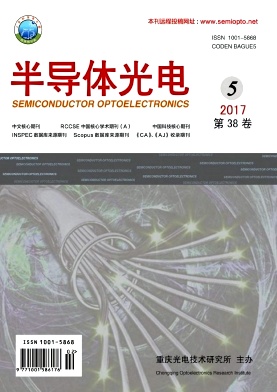半导体光电, 2017, 38 (5): 633, 网络出版: 2017-11-24
BOTDA传感系统的布里渊频移提取方法研究进展
Research on Brillouin Frequency Shift Extraction Method of BOTDA Sensing System
布里渊光时域分析 曲线拟合 神经网络 互相关 深度学习 亚像素 Brillouin optical time domain analysis curve fitting artificial neural network cross correlation deep-learning sub-pixel
摘要
随着布里渊光时域分析(BOTDA)传感技术在许多大型基础工程设施安全监测中的广泛应用,对测量精度和实时性的要求日益提高。采用传统的最小二乘曲线拟合方式对布里渊散射谱进行布里渊频移提取,其测量结果的精度依赖于参数初始值的选取和噪声的影响,并且拟合算法的参数迭代求解过程增加了数据处理的时间,降低了工程实时性。文章综述了多种非线性参数优化估计的曲线拟合算法和基于神经网络的布里渊散射谱特征提取的混合优化算法,介绍了无需经过曲线拟合的互相关法(XCM)、深度学习法(DL)和亚像素级精度的重心提取算法(CDA),这些算法能适应更大的扫频步长,实时性更好。
Abstract
With wide applications of Brillouin optical fiber time domain analysis (BOTDA) sensing technology in safety monitoring of many large-scale infrastructure projects, much more stricter requirements are put on measurement accuracy and real-time. If the Brillouin frequency shift is extracted with the traditional least squares curve fitting, the accuracy of the measurement results depends mainly on the selection of the initial value and the influence of noise. And the iterative solution process of fitting algorithm increases the data processing time, which is not conducive to engineering real-time. In this paper, for estimating the central frequency of noisy Lorentzian curves acquired from the measurements with BOTDA sensors, it is summarized the curve fitting algorithms based on optimal estimation of nonlinear parameters and the hybrid fitting algorithms based on the neural network for feature extraction of Brillouin scattering spectrum. In addition, the cross correlation method(XCM), deep-learning(DL) method and the centroid detection algorithm(CDA) are introduced.
尚秋峰, 胡雨婷, 刘薇. BOTDA传感系统的布里渊频移提取方法研究进展[J]. 半导体光电, 2017, 38(5): 633. SHANG Qiufeng, HU Yuting, LIU Wei. Research on Brillouin Frequency Shift Extraction Method of BOTDA Sensing System[J]. Semiconductor Optoelectronics, 2017, 38(5): 633.



